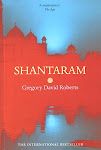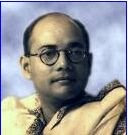Agni putri- the missile project director
Ms Missile Scientist
….M. SOMASEKHAR …from the pages of THE HINDU BUSINESS LINE newspaper.
There were just 12 days left for the critical Agni-V missile launch, but that was not why Tessy Thomas was uneasy in the stomach. The doughty ‘Agni putri', as the missile project director is fondly nicknamed, was simply having a bad tummy from the constant travel her work entailed.During a chance meeting over lunch at the Advanced Systems Laboratory in Hyderabad she appeared rather anxious about what she ate. But regarding the country's most ambitious ballistic missile launch — the 5,000-km range Agni-V — Tessy exuded nothing but confidence.Yes, the preparation was long, involving a lot of meticulous checks. But once the mission parameters are completed, the actual blast-off and launch will take just under half an hour. It's unlike Space launches, which have an elaborate countdown, she had explained.Alongside Tessy, the missile programme's top team comprising Avinash Chander, V.G. Sekharan and Ravi Gupta, as also DRDO Chief Dr V.K. Saraswat were a confident lot from the beginning. The success of Agni-III had boosted their morale considerably. Agni-V was a virtual extension in terms of distance. The other big test was re-entry at a much higher temperature differential.
Nevertheless, as they were encountering conditions in hitherto uncharted areas of Space, the suspense was intense.All the hard work was finally rewarded with success when the missile travelled with precision and achieved its distance and target. The team was overjoyed. “The happiness cannot be expressed. It was the fruitful outcome of three years of hard work by a large team. In a span of 20 minutes, as the missile soared and completed its task, our tensions were wiped out and a new confidence dawned,” she recounts.“In the coming years we will work on guidance systems for the MIRVs (Multiple Independently targetable Re-entry Vehicles),” she says.
An ambitious start
From the day she joined the Defence Research and Development Organisation in 1988, Tessy has been involved with the country's ambitious missile programme. “Right from the beginning I have been involved in developing inertial navigation systems. During the first Agni launch in 1989, I was also involved in solid propulsion. Our team has developed this crucial technology along with onboard guidance and they have been well established. The challenge ahead is to extend them to multiple stages,” she says.In the steadily growing missile community, Tessy has been the most visible female face for years. Along the way she's had many firsts. She worked her way up to become the first woman to lead a missile project with Agni III. The mission's success brought her greater responsibilities with Agni IV and, now, Agni V.
“I was very fortunate to have worked under the guidance of stalwarts like former President Mr A.P.J. Abdul Kalam, Dr R.N. Agarwal and now Dr Avinash Chander, who have led the programme in its near three-decade journey. Dr Kalam, who steered the first Agni launch, has been a role model for me. I am a student of Avinash Chander and, over the years, learnt a lot from them, both in terms of technology and management.” Over the years, this postgraduate in engineering from the Institute of Armament Technology, Pune, has strengthened her managerial skills with an MBA from IGNOU, as also a couple of short courses in project management from IIM-Ahmedabad. Originally from Thrissur in Kerala, the scientist has made Hyderabad her home for the past 25 years. Her husband, Saroj Kumar Patel, is a naval officer who is currently based in Mumbai. He is equally clued into missiles thanks to a stint at the quality assurance directorate of DRDO.
With its focus on completely indigenous development, work on the Agni programme has been intensive and time-consuming. Tessy has had to dextrously juggle family and work. “The last four years have been very taxing with the series of Agni launches. I could hardly get time to pursue my other interests — reading and badminton,” she says. Her son, Tejas, is in the final year of his engineering course in Vellore. She is quick to clarify that her son's name is in no way connected to the famous defence aircraft. “I named him in 1990, a clear couple of years before the LCA (light combat aircraft) was named Tejas,” she says.
Young, enthusiastic lab
The Advanced Systems Laboratory she works at currently is among the youngest of DRDO's labs; it was set up in 2000. Women constitute about 10 per cent of the predominantly young scientific community here. Rohini Devi, an expert in composite technology, is another top woman scientist at ASL, in the position of Associate Director.The young lab is vested with the tough task of strengthening the country's strategic deterrence through the Agni programme. There is a new determination and high level of commitment among the younger generation of scientists,” says Tessy.Equally important has been the ability to learn from the failures. “When it comes to failures and setbacks, we are definitely disheartened, as happened with the Agni IV flop in the first trial. But, over the years, we have put in place a sound failure analysis system to find out the root cause and rectify it,” says Tessy, adding that this has crucially contributed to the Agni programme's growing success rates.












